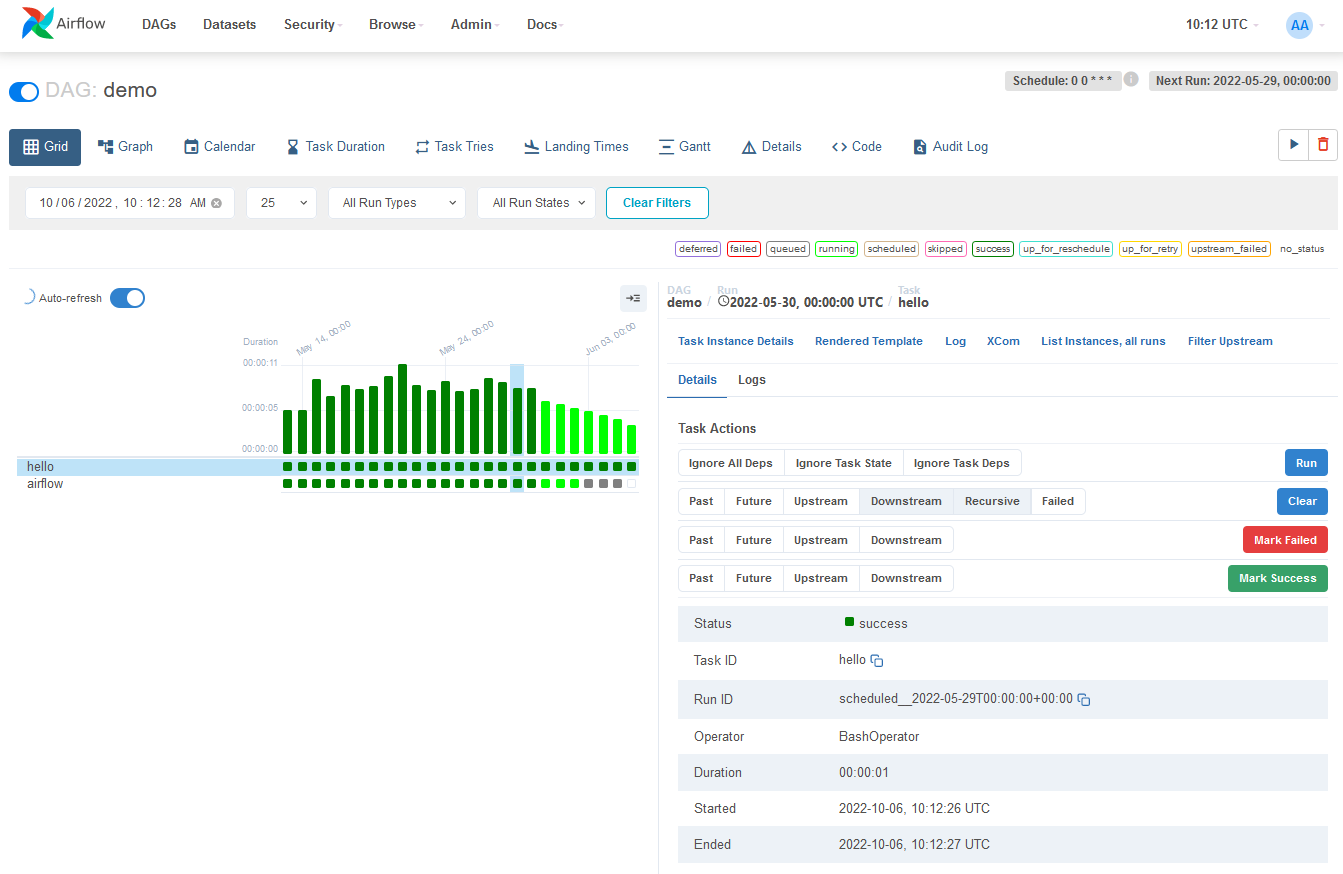A journey to faster feedback on Airflow
Discovery of Airflow’s test pyramid
Who am I?
Background for context 😄
Solution consultant at
(Former) JVM Jedi

I am was not

Safety nets are essential

What is

A short introduction
A batch workflow orchestration platform
- Create, monitor and schedule workflows as DAGs
- Python 🐍 for defining workflows as code
DAG as code
from datetime import datetime
from airflow import DAG
from airflow.decorators import task
from airflow.operators.bash import BashOperator
# A DAG represents a workflow, a collection of tasks
with DAG(dag_id="demo", start_date=datetime(2022, 1, 1), schedule="0 0 * * *") as dag:
# Tasks are represented as operators
hello = BashOperator(task_id="hello", bash_command="echo hello")
@task()
def airflow():
print("airflow")
# Set dependencies between tasks
hello >> airflow()
Workflow as a DAG

Monitoring a DAG

Our usage of airflow
TODO: insert image explaining the relationship between Airflow as an orchestrator managing our data pipelines and parts of our data lake.
The journey
Recapping the learnings from the past couple of years in this space
Nightmare of no safety nets

Splitting the codebase
- ⚠️ Writing automated tests for DAGs directly was hard
- ⌨️ We split the “logic” out into
utilities - 🟢 Strong unit tests for
utilities - 🟡 Airflow DAGs, operations and any related functionality didn’t have tests at this stage
Plague of misconfiguration
- Accidentally ran child DAGs “before” parents
- Delays the entire process by over a week
- Order of tasks was accidentally broken at times and we didn’t realize it
Automating airflow tests
Manually created database
def pytest_configure() -> None:
target = './unittests.db'
template = './unittests.db.template'
if not Path(target).is_file():
shutil.copy(template, target)
Test task dependency order

Verify cross task communication data
TODO: code sample testing XCom
Render Jinja templates in tasks and test them

What didn’t work
⚠️ Tests were slow due to DagBag loading
- Every test loads the DagBag again.
- Every DagBag instance scans for DAGs and loads them
- This takes 2-3 seconds
⚠️ Large number tests existed in the repo
- Over 1000 tests in a repository took 3-5 minutes to run
- Start using
pytest-xdistfor parallelism - Shared DagBag state breaks tests
- 🟢 Create cache burst policy (
dag_bag_instance_key)
The solution
@lru_cache()
def dag_bag(dag_bag_instance_key: Optional[str] = None) -> DagBag:
path_to_read_dags = './dags'
logging.debug(f'Fetching DagBag for config key {dag_bag_instance_key} from path {path_to_read_dags}')
return DagBag(
dag_folder=path_to_read_dags,
include_examples=False,
store_serialized_dags=False
)
⚠️ Airflow UI is slow / S3 cost is high
with DAG(dag_id="demo", start_date=datetime(2022, 1, 1), schedule="0 0 * * *") as dag:
# DAG code here
# this code is run during DAG load
import boto3
bucket = boto3.Session().resource('s3') \
.Bucket('sample-bucket')
for bucket_object in bucket.objects.all():
print(bucket_object.key)
The solution
- identify slow tests
- trace down to DAG load
- identify slower DAGs
- 🟢 delay the function execution to the DAG run phase using Jinja
The result
Over 2000 tests in less than a minute!
Airflow upgrade to v1.10.15
- DB schemas change and all hell breaks loose
- Automating this required understanding how Airflow runs migrations
def pytest_configure() -> None:
target = './unittests.db'
if not Path(target).is_file():
db.resetdb(rbac=True)
Airflow upgrade to v2.0.0
The “ports” hack
TODO: add code
Airflow’s internal DB structure changes
TODO: add code
Relative paths for DBs don’t work
Annoying, but can be addressed TODO: add code
Disable parallel tests
TODO: add code explanation 😱
Current state
Single migration + Multiple DBs = Parallel test bliss
TODO: add code
Future state
Auto-detect test groups by system state
TODO: add code to show why this will help
